by Wine Owners
Posted on 2013-06-11
The Wine Owners team had a BYO dinner at Cafe Anglais last month where we tasted some great wines. Here's the order of fare:
Les Plantiers de Haut-Brion Blanc Pessac Leognan 2007
Les Plantiers is a very limited production white from the young vines of Haut Brion and La Mission Haut Brion. It offers more than a hint of the style and quality of the Grand Vin, with a zesty and lively fruit appeal supported by good depth and minerality. Pure and balanced, long in the mouth, it will drink well on arrival but could also take five year's cellaring.
(90 points RP)
WO team view: White wine of the night. Taut, really long and pure, with at least a decade of life ahead.
Domaine Remi Jobard Meursault Charmes Premier Cru 2001
The superb, white flower-scented 2001 Meursault-Charmes splendidly combines breadth, depth, density, and concentration with focus, balance, and elegance. This intensely flavored wine is crammed with creamed minerals, limestone, chalk, and juicy spiced pears whose flavors can be experienced throughout its magisterial finish. (93-95 points WA)
WO team view: Showing why 2001 is such an extraordinary white burgundy vintage. The WA note reflects current reality perfectly.
Domaine Georges Roumier Morey-Saint-Denis Clos de la Bussiere Premier Cru 1997
Bright and scintillating if a little more backward than Roumier Chambolles. Gripping dark cherry and cherry stone fruit with touches of bramble and cassis wrapped in firm, defining fruit tannins. There is also a savoury mineral, stone and herb dimension, making this a very complex, complete Morey.
WO team view: Top of its game, and would have been a candidate for wine of the night were it not for..
Domaine Ghislaine Barthod Chambolle-Musigny Les Charmes Premier Cru 1999
The stunning 1999 Chambolle-Musigny Les Charmes is medium to dark ruby-colored and has an explosive blackberry, raspberry, and super-ripe cherry-scented nose. Medium to full-bodied, broad, and satin-textured, this is a superb wine that coats the palate with loads of cherries, violets, and candied black raspberries. Its perfumed, harmonious personality is feminine, expansive, and concentrated. Additionally, it reveals an exceptionally long, juicy, and delineated finish. It is the finest wine I have ever tasted from Mme. Barthod. Projected maturity: 2005-2014. (93-95 points WA)
WO team view: Not quite as boisterous as the deep, intense Morey. More to come in the coming few years.
Domaine du Pegau Cuvee Reservee Chateauneuf du Pape 1995
The 1995 Cuvee Reservee exhibits an opaque black/purple color, and extraordinary rich, intense aromas of smoke, black raspberries, kirsch, and spice. Exceptionally full-bodied, with an unctuous texture, and a thick, rich, expansive mid-palate, this superbly concentrated wine appears to be a worthy rival to this estate's phenomenal 1989 and 1990. This is a blockbuster Chateauneuf du Pape. Anticipated maturity: 2001-2020. (94 points Robert Parker)
WO team view: Perfectly mature, gamey and uniquely complex. Rich, sappy, utterly beguiling and moorish.
Chateau Grand Puy Lacoste Pauillac 5eme Cru Classe 1989
I absolutely love the nose on this wine, with amazing aromas of currant, tar, spices and berries that jump out of the glass. Loads of flowers, too. So complex. Delivers a full-bodied palate, with racy tannins and lots of flavor, from tar to spices to leather. A little tight, and so enjoyable now, but better in a few years still.’ (2010) (95 points, James Suckling)
WO team view: Wine of the night. Extraordinarily complex; it kept evolving in the decanter throughout dinner. GPL simply stomped all over Hosanna. No context, embarrassing really...
Chateau Hosanna Pomerol 2000
Dense ruby/purple, with a glorious nose of blackberries, cassis, white flowers, licorice, and a hint of sweet oak, this seamless wine is a classic example of purity and symmetry. A singular style reminiscent of a hypothetical blend of Cheval Blanc and L'Evangile.
(96 points, Robert Parker)
WO team view: Yeah it's good. Rich, deep, quite lingering, but made to look very ordinary by GPL 1989.
Domaine Huet Cuvee Constance Moelleux Vouvray 1993
The 1993 Cuvée Constance has a remarkably rich colour for any wine from Vouvray, belying the intensity of this nectar. The nose is remarkable, marked by aromas of rich golden syrup, with a whispering seam of botrytis which has a curiously dry suggestion, as does the nutty, caramel nuances that follow on. This is deep, complex and multi-faceted. Chris Kissack
WO team view: Lovely end to an amazing dinner, and not a single duff bottle. A sign of good fortune with which to toast the success of Wine Owners perhaps?
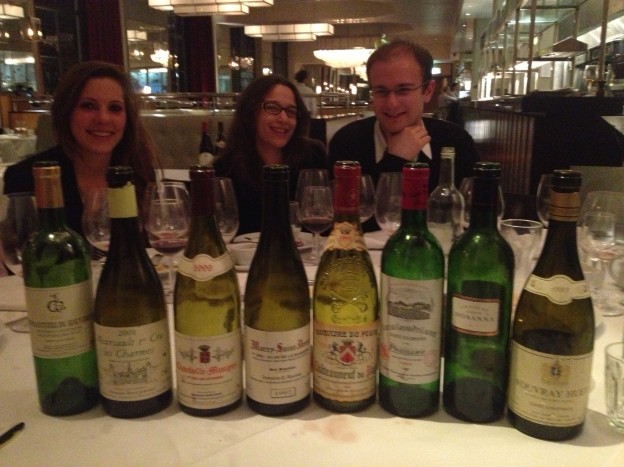
By the way, did you want to know the food that accompanied the wines? Thought not...
by Wine Owners
Posted on 2013-05-03
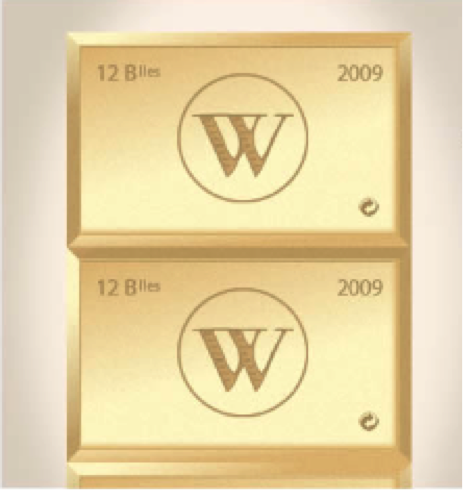
Wine is a classic collectible asset.
Fine wine differs from stocks and shares in that it does not produce an income and it is not fungible. In this it shares common characteristics with other collectible classes such as art, stamps, coins, cigars and classic cars.
Fungible is another way of saying ‘interchangeable’. Cash is fungible; one £20 note having equivalence with any other note of the same value. Pure gold is also fungible, a gram being interchangeable with any other gram.
In contrast, diamonds are not perfectly fungible because varying cuts, colors, grades, and sizes make it difficult to find many diamonds that are exactly alike. Diamonds illustrate the point that fungibility is not the same as liquidity or scarcity. A global market can nonetheless exist and thrive irrespective of whether an asset class is perfectly fungible or not.
Neither is fine wine perfectly fungible, notwithstanding the contrary views of Joe Roseman, the investment economist who coined the phrase SWAG for Silver, Wine, Art and Gold.
Similarly, typically over time, one case of a particular wine of the same vintage loses its ability to be treated as interchangeable with another, due to variables such as storage location (and implied quality of condition), tax status (held under bond or duty paid), back or strip labels (denoting its original export destination e.g. China) and packaging (e.g. original wooden case or a repack).
Non-fungibility creates market pricing variability. To illustrate the point from another collectible segment, cigars stored at Dunhill in Mayfair are thought to carry a premium at auction houses; such is the excellent reputation of their humidor.
The growing globalisation of the fine wine market over the last decade, with the opening up of the Far East and Russian markets, and the future potential influence of Brazil, India and other emerging regions, has shone a spotlight on the importance of wine provenance – being the term used to describe history and current condition.
The question of how good is a wine’s provenance arises directly from the fact that wine is not fungible. The top estates (typified by the Bordeaux First Growths) are gradually adopting technological innovations that could help in future. Everyone agrees that provenance can only become increasingly important.
Where the wine is stored, how long it’s been kept there undisturbed, where it’s been and the distance it’s had to travel; are all more pertinent questions than ever before.
A new system of building and tracking provenance is surely needed, where older stocks can be traced back, through transfer of title, movements, location changes and inspections.
Traceability and reliability of source will increasingly justify higher prices for the best stock, and lead to a disparity of value or market liquidity between two bottles or cases of the same wine.
There is already a widening gap between older wines sourced direct from the producer compared with secondary market stocks in those cases where history cannot be proved.
It is well worth the investment in time to seek out secondary market stock with good provenance, in order to assure your fine wine purchases can serve as an effective store of value. Greater market transparency is surely the key to giving private buyers the confidence and information they need.
by Wine Owners
Posted on 2013-04-04
Fine wine is a multi-million dollar industry and is fraught with peril. From fake bottles to fraudulent contents, from mislabelled wine to misled consumers, wine has been faked, forged, and used for fraud for as long as it has been consumed.
This eBook provides a brief history of forgery and fraud in the fine wine world, including case studies on Rudy Kurniawan and Hardy Rodenstock, and is available from Amazon for just £1.53, or free to borrow and read on the Kindle for 'Prime' users.
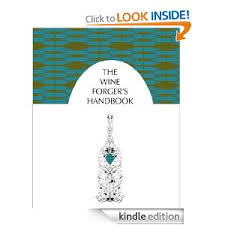
The Wine Forger’s Handbook also functions as a guide, both on how fraudsters have been found out, and tips on how to avoid being fooled in your own wine purchases.
Written by a pair of award-winning writers, wine expert Stuart George and best-selling art crime expert Dr. Noah Charney, The Wine Forger’s Handbook is a fun, informative, engaging read, and one which could potentially save you from making costly purchases of fake wine.
The Wine Forger’s Handbook is ideal for anyone from wine collectors to casual drinkers, or those who enjoy true crime stories of forgery, deception, and detection set against the vivid backdrop of the world of wine.
ABOUT THE AUTHORS
Noah Charney
Noah Charney is a professor of art history specialising in art crime and a best-selling author of fiction and non-fiction.
His books include the international best-seller novel The Art Thief; the best-selling Stealing the Mystic Lamb: The True Story of the World’s Most Coveted Masterpiece; The Thefts of the Mona Lisa: On Stealing the World’s Most Famous Painting; and the guidebook series Museum Time. He is editor of Art & Crime: Exploring the Dark Side of the Art World and editor-in-chief of The Journal of Art Crime, the first peer-reviewed academic journal in its field.
He is the founder of ARCA, the Association for Research into Crimes against Art, an international non-profit research group on art crime and cultural heritage protection (http://www.artcrimeresearch.org/). He teaches art history and art crime on the ARCA Postgraduate Certificate Program in Art Crime and Cultural Heritage Protection at American University of Rome and for Brown University.
He is a popular speaker and recently gave a TED talk on art crime, which can be viewed at http://www.youtube.com/watch?v=T897Foh5s0g. He is an award-winning columnist for numerous magazines, with regular columns in The Daily Beast (http://www.thedailybeast.com/features/how-i-write.html), Tendencias del Mercado del Arte, and ArtInfo (http://blogs.artinfo.com/secrethistoryofart/).
He encourages readers to join him on Facebook (https://www.facebook.com/NoahCharney) or through his website http://www.noahcharney.com/.
Stuart George
Stuart George is an independent wine consultant in London.
In 2003 he was awarded the UK Young Wine Writer of the Year. Stuart was co-author of The Wine Box (2005), picture editor and leading contributor to 1001 Wines You Must Try Before You Die (2008), and editor of the award-winning The Finest Wines of Tuscany and Central Italy(2009) and The Finest Wines of Champagne (2009).
Stuart has contributed to publications on five continents, including The Daily Telegraph, Fine Wine International, Fine Wine & Liquor, Meininger’s Wine Business Monthly, Sommelier Journal, The Tasting Panel Magazine and the Times Literary Supplement.
He is a sought-after show judge and has been a jury member at wine competitions in Austria, Brazil, Chile, China, France, Luxembourg, Portugal and Spain. He has worked harvests in France, Italy and Australia.
His website and blog is at http://www.StuartGeorge.net/. He can be followed on Twitter at @sdgeorge1974.
by Wine Owners
Posted on 2013-03-25
Wine Owners provides drinking advice across a large part of its growing database of 82,000 fine wines, based on 75cl bottles.
These drinking ranges are likely to be rather accurate, since we painstakingly average start and end dates from fine wine reviewers to arrive at the estimates.
It goes without saying that prime drinking will depend on many factors, such as long-term storage conditions, time of year shipped and periods when palettes may have been subjected to intense heat, for example dockside between reefer and cooled ship's container.
Those drinking dates can be largely disregarded when it comes to large formats. This Easter reminded me how dramatic the differences can be, when I judged a family dinner at my brother's new house to be the perfect occasion to open a double magnum of Mas de Daumas Gassac 1996.
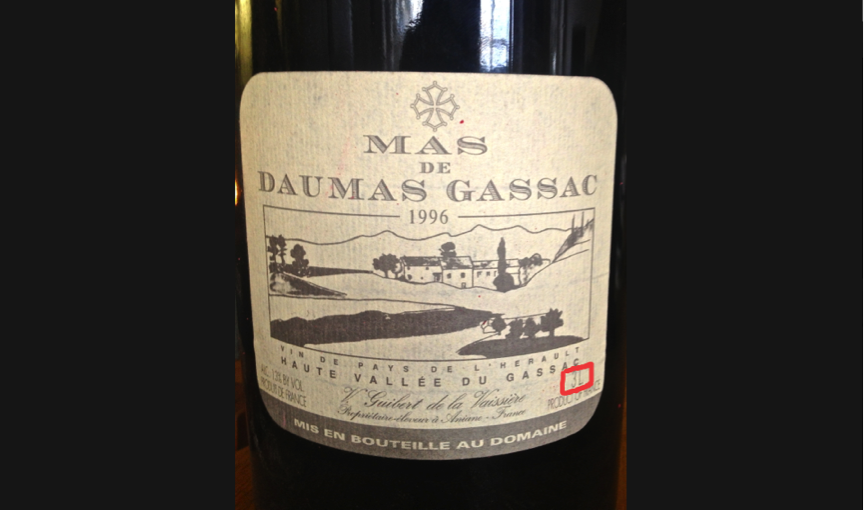
Bought just a year ago on the secondary market, this 3 litre double magnum was apparently well kept, coming out of good storage in its original wooden box and with a high fill level. I acquired it on a whim for GBP 80, knowing full well that the standard bottle size of this vintage could well be fading fast, following Cellartracker! notes and Chris Kissack from The Wine Doctor.
In the event, once the wax seal was broken and a delicate cork extracted, the wine was delightful; darkly coloured with a rusty-bricked rim. Sweet cedar and savoury scents gave way to a palate of earthy blackberry, lifted with bright notes of fresh currents providing the requisite balance and energy on the way to a soft delicate finish. Hard to resist before the meal, but showing enough power and substance to complement the roast duck.
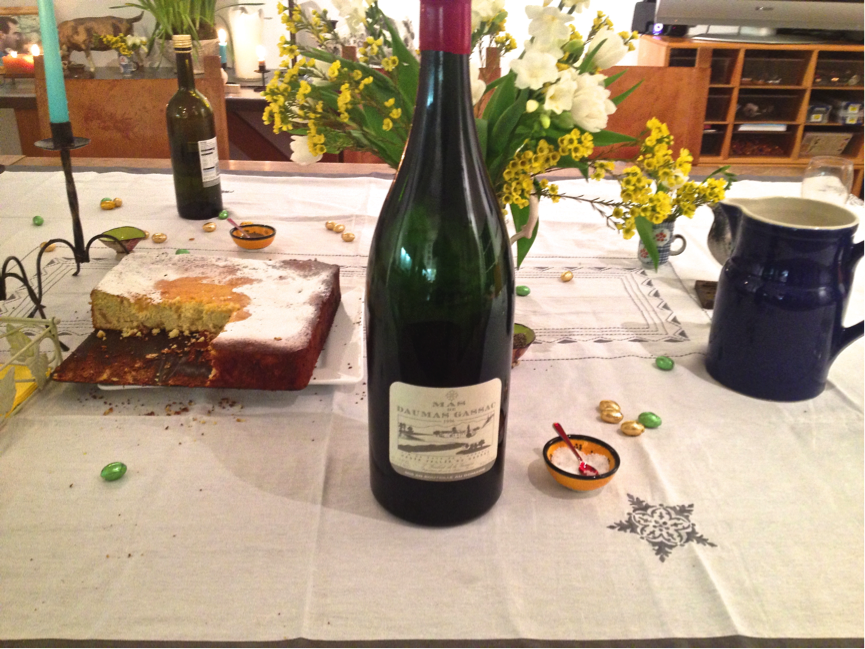
The moral of this story: take drinking advice for large formats with a large pinch of salt.
Buying bigger bottles on the secondary from other collectors can be a rewarding experience full of nice surprises. Sure there are disappointments along the path of discovery and fine wine appreciation, and you can't exactly ask for your money back from another collector. But that misses the point; buy what you can afford and savour the victories!

